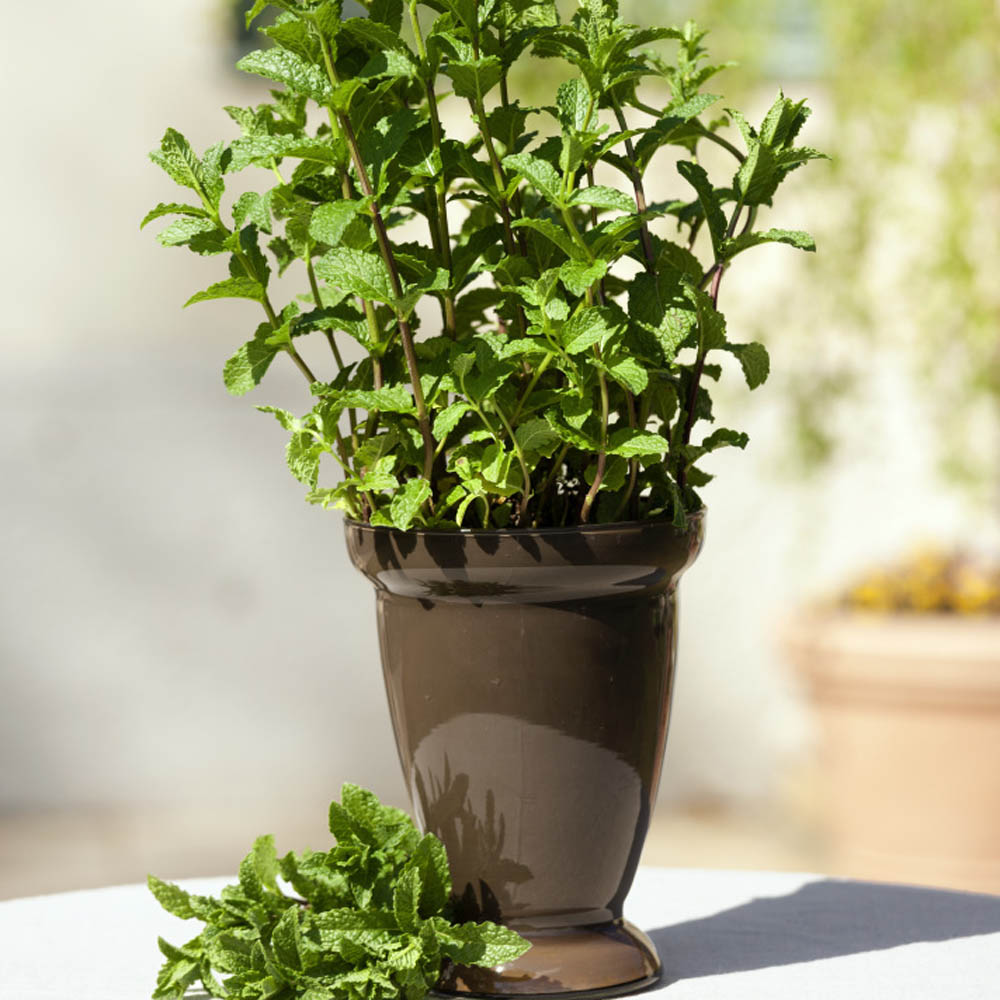-
CATEGORY ::
- All Seeds /
- All Herb Seeds /
- All Mentha Seeds






Spearmint Seeds
About...
Spearmint (Mentha Spicata) - Sweetly aromatic, Spearmint, can be used in both cooking and in potpourri and other fragrant decorative items. Spearmint herb is used to make mint jellies and sauces and of course, tea! Spearmint also has medicinal benefits as well. It is a wonderful addition for the garden that can easily be started with Spearmint herb seeds.
MORE MENTHA OPTIONS
Herb Specifications
SEASON
Perennial
USDA ZONES
4 - 9
HEIGHT
12 - 36 inches
BLOOM SEASON
Early summer
BLOOM COLOR
Lavender
ENVIRONMENT
Full sun to partial shade
SOIL TYPE
Moist, well-drained, pH 6.1 - 7.5
DEER RESISTANT
Yes
Planting Directions
TEMPERATURE
60 - 70F
AVERAGE GERM TIME
14 - 21 days
LIGHT REQUIRED
Yes
DEPTH
1/8 inch
SOWING RATE
3 - 5 seeds per plant
MOISTURE
Keep moist until germination
PLANT SPACING
18 inches
Sweetly Aromatic
This Spearmint can be used in cooking, in a potpourri, and other fragrant decorative items!

Spearmint Seeds
How to Grow
Start Spearmint seeds indoors 8 - 10 weeks prior to last spring frost or sow herb seeds directly outdoors in partially shaded, moist, soil. Sow the herb seeds only 1/8 inch deep in loose soil. Transplant the Spearmint seedlings when they reach 2 inches tall.
- Sowing Rate: 3 - 5 seeds per plant
- Depth: 1/8 inch
- Moisture: Keep moist until germination
- Average Germ Time: 14 - 21 days

Herb Specifications
Approximate Seeds Per Ounce: 470,000.
- Plant Spacing: 18 inches
- Height: 12 - 36 inches
- USDA Zones: 4 - 9
- Season: Perennial
Spearmint (Mentha Spicata) - Sweetly aromatic, Spearmint, can be used in both cooking and in potpourri and other fragrant decorative items. Spearmint herb is used to make mint jellies and sauces and of course, tea! Spearmint also has medicinal benefits as well. It is a wonderful addition for the garden that can easily be started with Spearmint herb seeds.
This perennial grows to 3 feet tall and spreads rapidly to indefinite widths. The 2 - 3 1/2 inch lance-shaped leaves are a unique wrinkled texture. Oblong terminal spikes of lavender-pink flowers appear all summer. Like other mints, Spearmint plants are extremely easy to grow. In fact, they grow so well, it is best to confine them to containers.
How To Grow Spearmint From Herb Seeds: Start Spearmint seeds indoors 8 - 10 weeks prior to last spring frost or sow herb seeds directly outdoors in partially shaded, moist, soil. Sow the herb seeds only 1/8 inch deep in loose soil. Transplant the Spearmint seedlings when they reach 2 inches tall. Harvest leaves when the Spearmint herb plant reaches 12 inches tall. Pick the larger outside leaves as the plant grows to encourage more leaf growth. Young leaves and stems have best flavor. Dry mint leaves on trays or by hanging bunched branches upside down in a warm, dark, well-ventilated area. Fresh leaves are easy to freeze too.
Approximate Seeds Per Ounce: 470,000



























